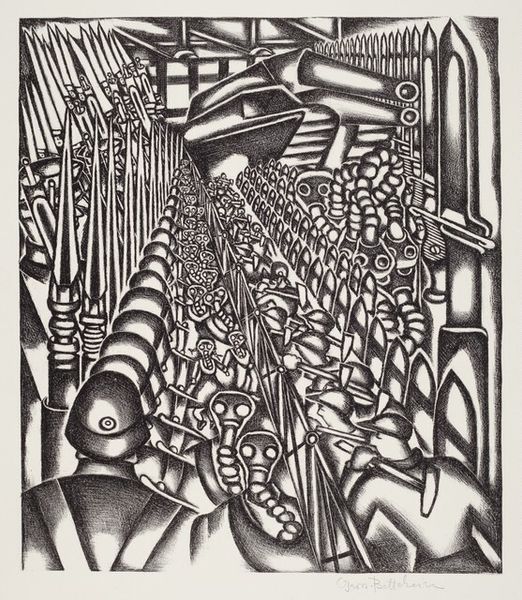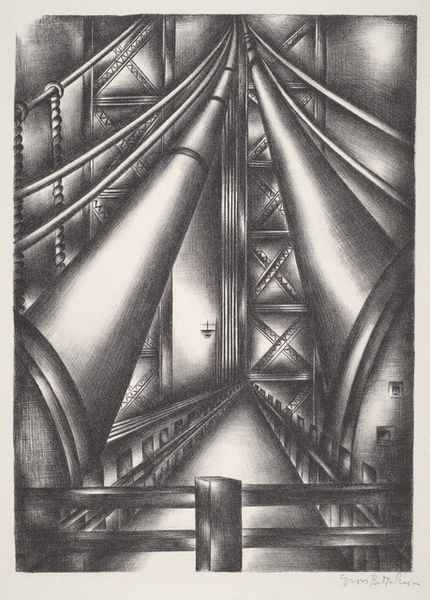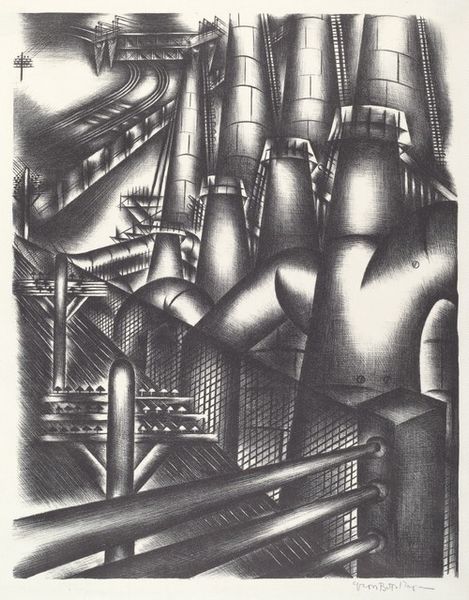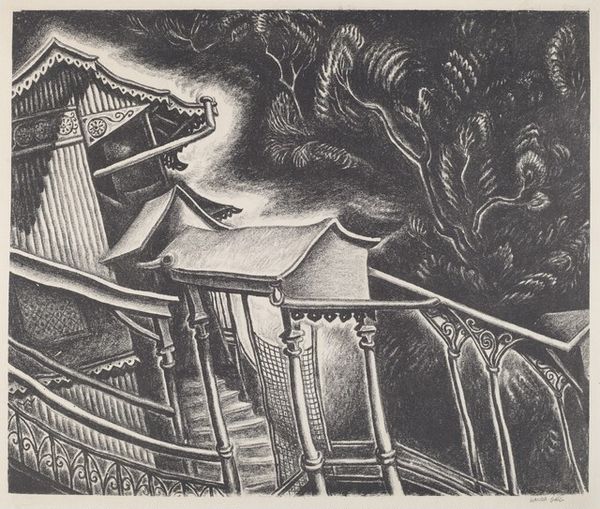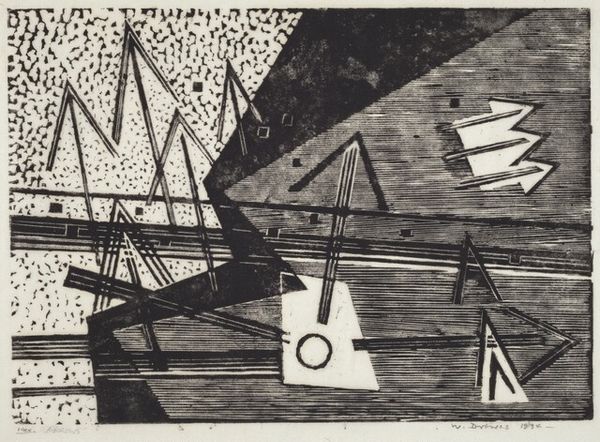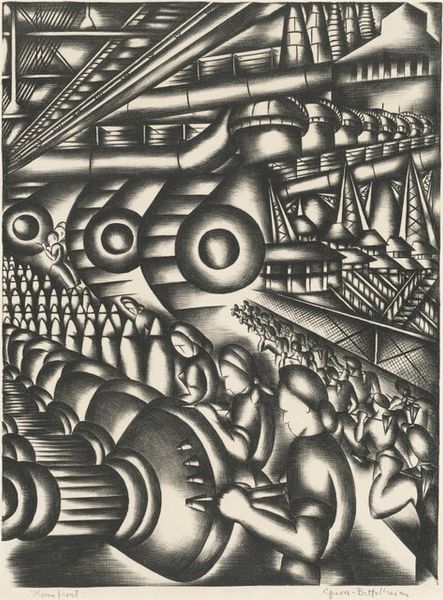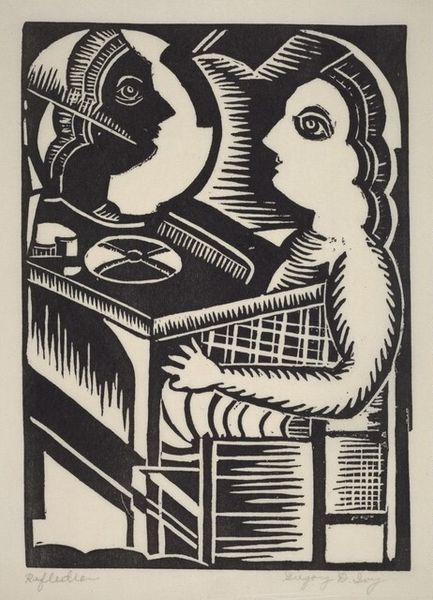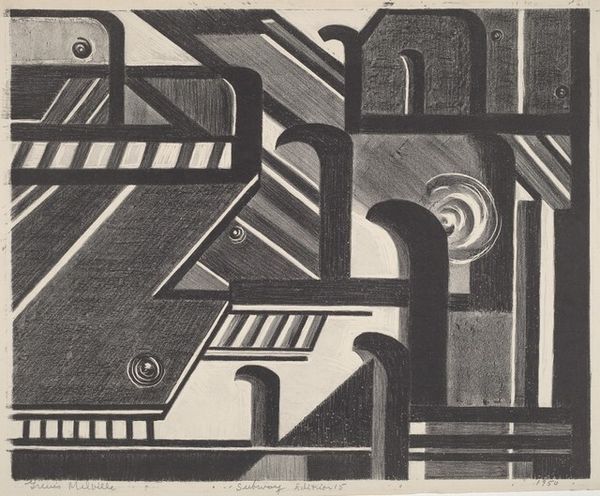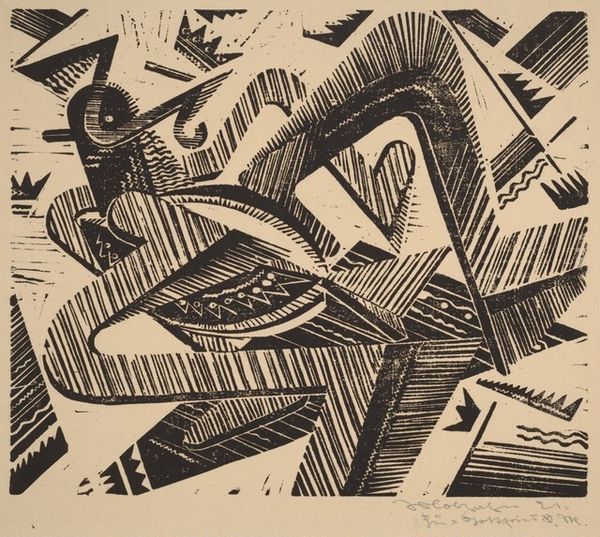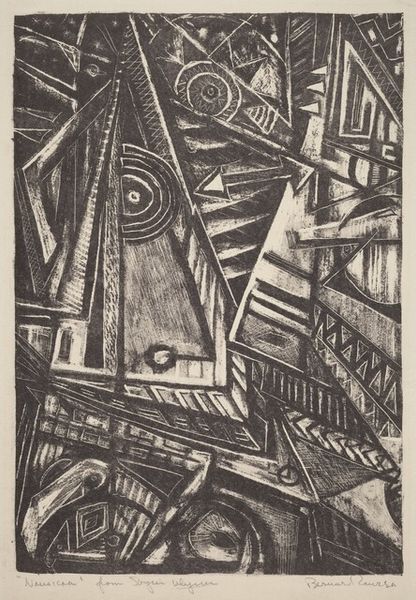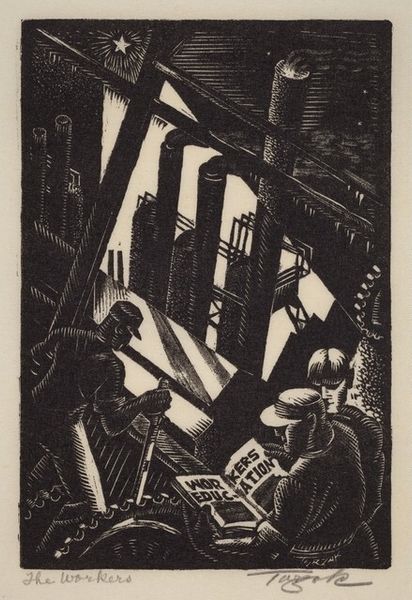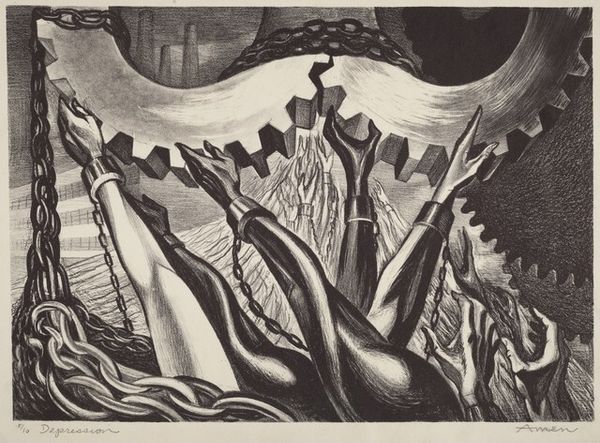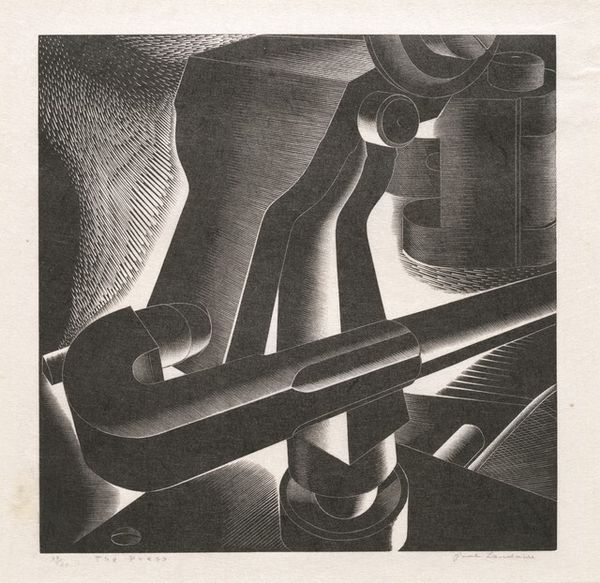
drawing, print, graphite
#
precisionism
#
drawing
# print
#
crosshatching
#
geometric
#
graphite
#
cityscape
#
modernism
Dimensions: image: 32 × 42.3 cm (12 5/8 × 16 5/8 in.) sheet: 41 × 49.2 cm (16 1/8 × 19 3/8 in.)
Copyright: National Gallery of Art: CC0 1.0
Editor: This is Jolán Gross-Bettelheim’s graphite drawing "Trains and Bridges," from around 1940. It’s incredibly detailed and almost feels like a blueprint, but also a bit dreamlike. What strikes you when you look at it? Curator: What jumps out is the obsessive rendering of texture through the crosshatching, indicative of the incredible labor involved. Think about the economic realities of the time— the ‘40s were still feeling the effects of the Depression. Graphite was affordable, and printmaking allowed for wider distribution of images. How does the medium inform your reading of the subject? Editor: Well, the subject itself is industrial. All these intersecting bridges, the stylized train… It makes me think of the machine age and mass production. Curator: Exactly! And the graphic quality is perfect for that theme. But beyond the aesthetic, we need to consider the social context. Gross-Bettelheim, a Jewish woman working during a tumultuous period, used accessible materials to depict symbols of progress while perhaps subtly commenting on the potential dehumanization of industrialization. Look at how the geometric shapes almost trap the implied human element. Do you get a sense of tension, perhaps? Editor: I do, now that you mention it. It's not a celebratory image of progress. There's a weight to it, almost a warning. I didn't consider the accessibility of the materials as a conscious choice, but it makes so much sense now. Curator: The materiality speaks volumes about the artist’s intentions and circumstances. It highlights that even in a drawing of urban development, labor, economy, and identity are inscribed within the materials. Editor: That's a great point. I'll definitely look at materiality differently from now on. Curator: That’s great. There is so much that we can learn by asking “How was this made, and what does it tell us?"
Comments
No comments
Be the first to comment and join the conversation on the ultimate creative platform.

